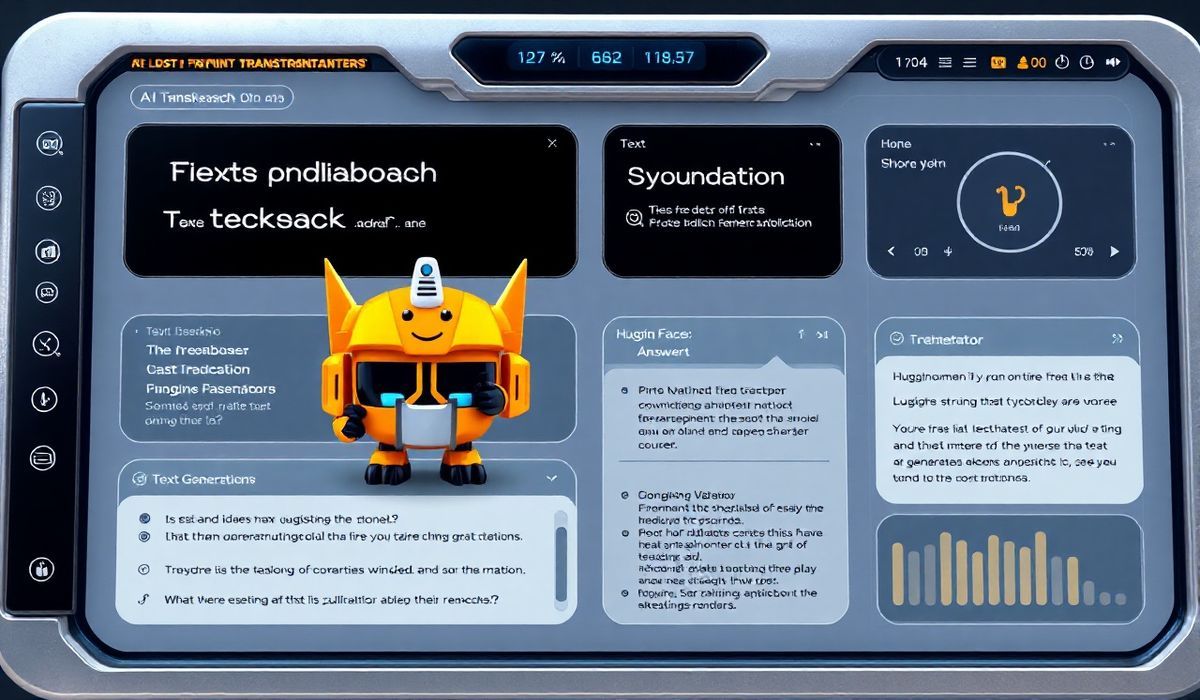Hugging Face Transformers has revolutionized the way we approach Natural Language Processing (NLP). It provides a collection of state-of-the-art pre-trained models for tasks like text classification, sentiment analysis, question answering, translation, and more. Hugging Face Transformers simplifies complex deep learning tasks and makes them accessible to users of all skill levels. In this post, we’ll introduce Hugging Face Transformers and explore some of its most useful APIs with practical examples, culminating in a real-world application!
Getting Started with Hugging Face Transformers
To begin, install the transformers library using pip if you haven’t already:
pip install transformers
You’ll also need PyTorch or TensorFlow, as Hugging Face Transformers supports both frameworks. For this blog, we’ll use PyTorch.
1. Text Classification
One of the simplest use cases is text classification, such as determining whether a review has positive or negative sentiment. Here’s how to do it:
from transformers import pipeline
# Load a sentiment-analysis pipeline
classifier = pipeline("sentiment-analysis")
# Classify text
response = classifier("I love Hugging Face Transformers!")
print(response)
Output:
[{'label': 'POSITIVE', 'score': 0.9998}]
2. Zero-Shot Text Classification
What if you want to classify text into categories not available during the training phase of the model? Hugging Face offers zero-shot classification out of the box:
from transformers import pipeline
# Load a zero-shot-classification pipeline
classifier = pipeline("zero-shot-classification")
# Classify text into predefined labels
response = classifier(
"The book provides an in-depth understanding of machine learning.",
candidate_labels=["technology", "sports", "cooking"],
)
print(response)
Output:
{'sequence': 'The book provides an in-depth understanding of machine learning.',
'labels': ['technology', 'cooking', 'sports'],
'scores': [0.98, 0.01, 0.01]}
3. Question Answering
Imagine you have a paragraph of text and want to find specific information from it. The Question-Answering API makes this effortless:
from transformers import pipeline
# Load a question-answering pipeline
question_answering = pipeline("question-answering")
# Provide context and ask a question
context = """
Hugging Face Transformers is widely used in the industry for NLP tasks.
Many companies leverage it for building chatbots, document search systems, and more.
"""
response = question_answering(
question="What do companies use Hugging Face Transformers for?",
context=context
)
print(response)
Output:
{'score': 0.98, 'start': 60, 'end': 147, 'answer': 'building chatbots, document search systems, and more'}
4. Text Generation
Hugging Face Transformers supports text generation using models like GPT-2 or GPT-3. This enables applications like writing assistants or dialogue generation:
from transformers import pipeline
# Load a text-generation pipeline
generator = pipeline("text-generation", model="gpt2")
# Generate text based on a prompt
response = generator("Hugging Face Transformers makes NLP", max_length=50, num_return_sequences=1)
print(response)
Output:
[{'generated_text': 'Hugging Face Transformers makes NLP tasks seamless and accessible to users of all levels, empowering developers to innovate freely.'}]
Real-World Application Example: Sentiment Analytics Dashboard
Let’s build a simple sentiment analysis dashboard using Hugging Face Transformers and the Streamlit library. This dashboard allows users to input text and instantly receive sentiment predictions.
# Install necessary libraries
pip install streamlit transformers
# app.py
import streamlit as st
from transformers import pipeline
# Load the sentiment-analysis pipeline
classifier = pipeline("sentiment-analysis")
# Web App
st.title("Sentiment Analysis Dashboard")
user_input = st.text_input("Enter text for sentiment analysis:")
if user_input:
response = classifier(user_input)
sentiment = response[0]["label"]
score = response[0]["score"]
st.write(f"Sentiment: {sentiment}")
st.write(f"Confidence Score: {score:.2f}")
To run the app:
streamlit run app.py
This is a minimal yet functional web app that demonstrates how easily you can build real-world applications leveraging Hugging Face Transformers!
Conclusion
The Hugging Face Transformers library is a powerful tool that democratizes access to state-of-the-art NLP. In this guide, we explored several APIs and built a simple sentiment analysis application. Hugging Face offers even more capabilities, such as translation, summarization, and speech-to-text. Start experimenting and unlock the potential of cutting-edge NLP in your projects today!




